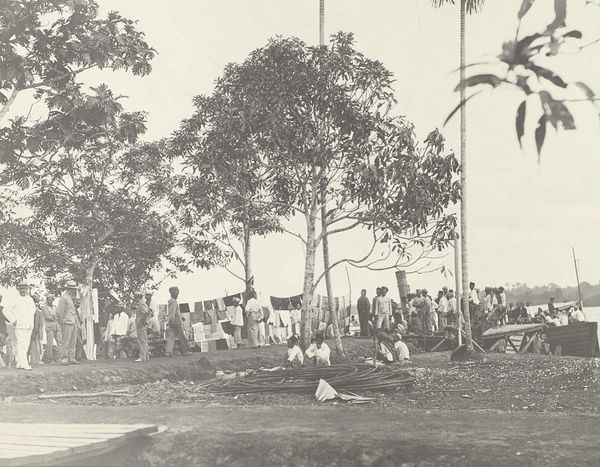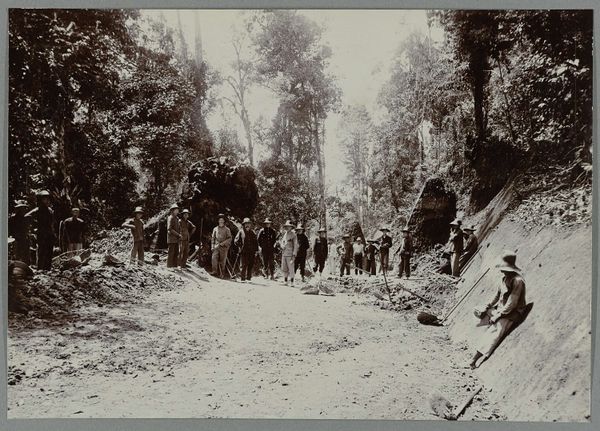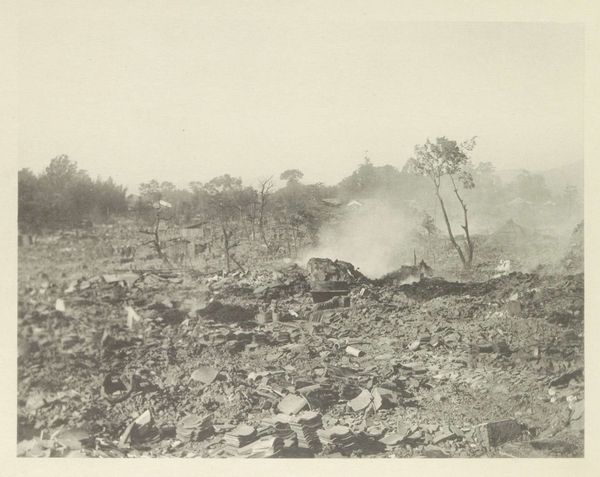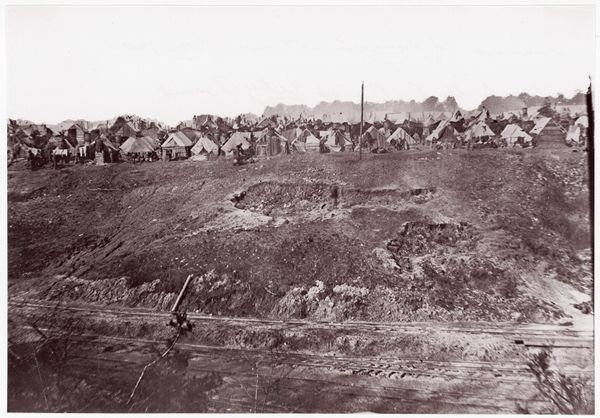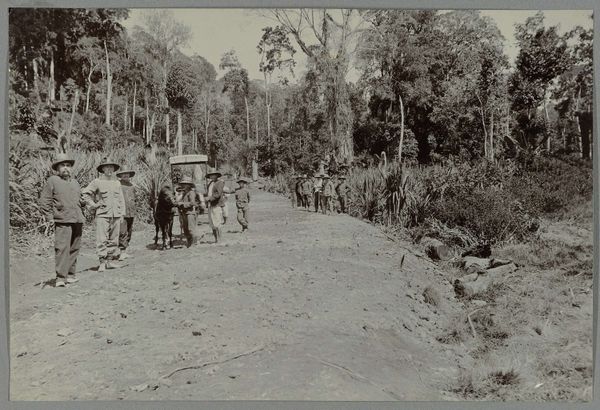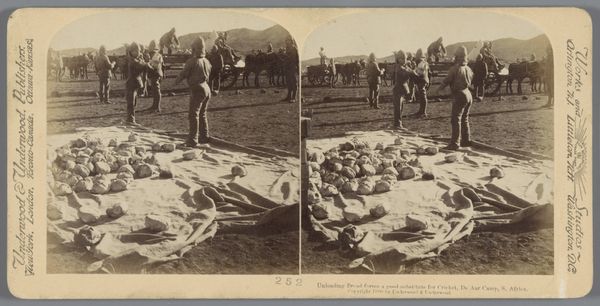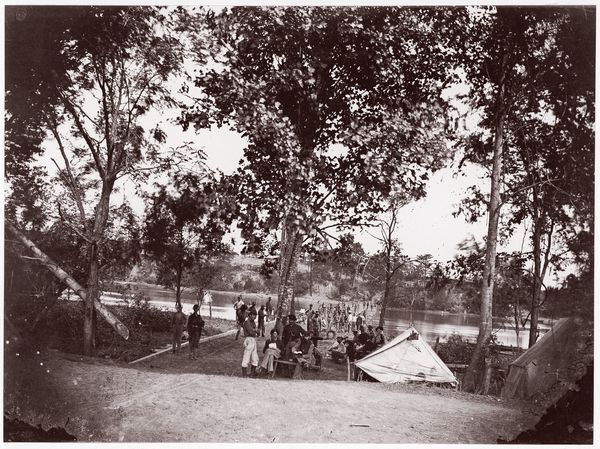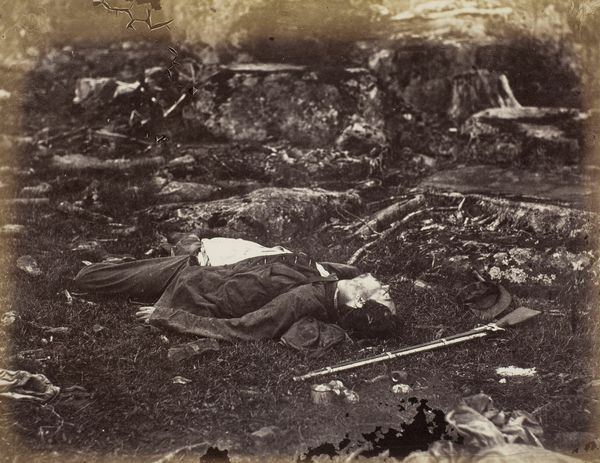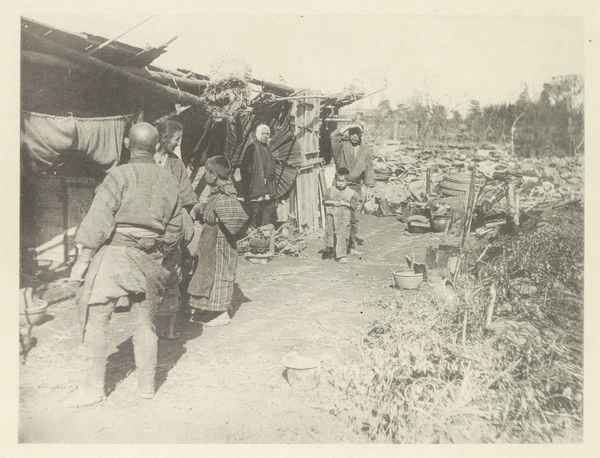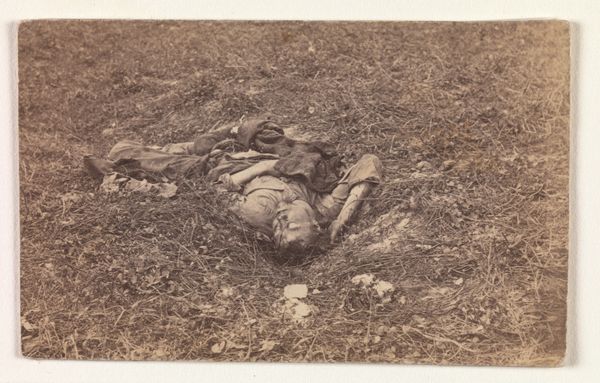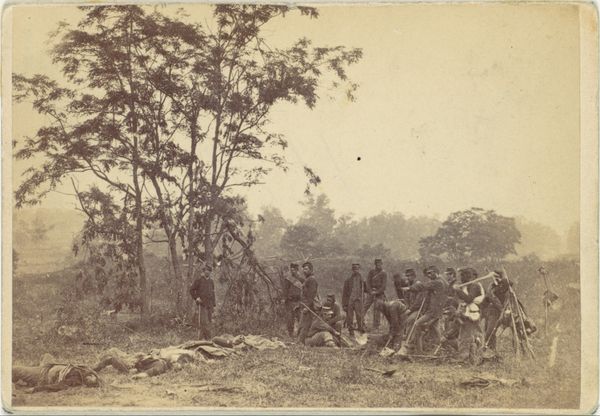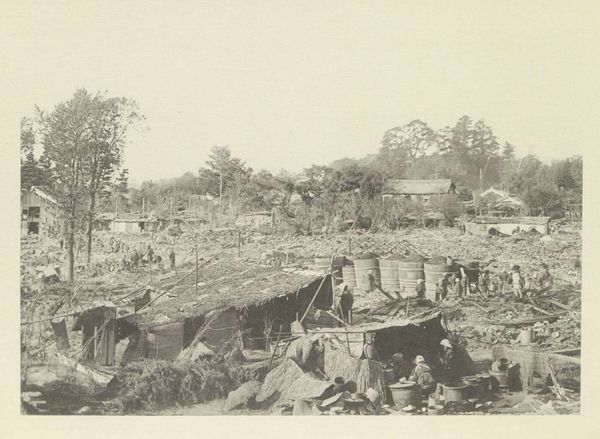
photography, gelatin-silver-print
#
black and white photography
#
war
#
landscape
#
photography
#
soldier
#
gelatin-silver-print
#
monochrome photography
#
history-painting
#
realism
#
monochrome
Copyright: Public Domain
Editor: We’re looking at "Burial of the Dead, Fredericksburg," a gelatin-silver print from 1863 by Andrew Joseph Russell. The figures are covered, anonymous. The starkness and scale of death are palpable. What is your take on this piece? Curator: This photograph acts as a chilling indictment of war, a silent scream against its brutal consequences. Note how Russell positions the viewer—we are not romanticizing heroism but forced to confront the dehumanizing realities. It raises important questions about who gets to control the narrative and whose stories are erased. The facelessness, you pointed out, is key. It is impossible not to reflect on the racial and class dimensions of the conflict. How do you see this image functioning as a historical document? Editor: It feels deliberately anti-heroic, avoiding any glorification of war, opting instead for grim realism. It speaks volumes about the immense loss and waste of life. How do we interpret its legacy? Curator: Exactly. The picture demystifies the war, stripping away any romantic notions. Russell compels us to consider how the dominant narratives of history often sideline the suffering of ordinary individuals and communities. What's so powerful here, even across the distances of time and context, is that Russell’s photograph fosters a dialogue. It’s not just a historical record but a powerful statement on the human cost of conflict that unfortunately remains relevant. Editor: It’s made me consider photography's unique power to make distant events much closer. Curator: And to critically examine the historical contexts that shape not only the artwork but also our interpretation of it.
Comments
No comments
Be the first to comment and join the conversation on the ultimate creative platform.
